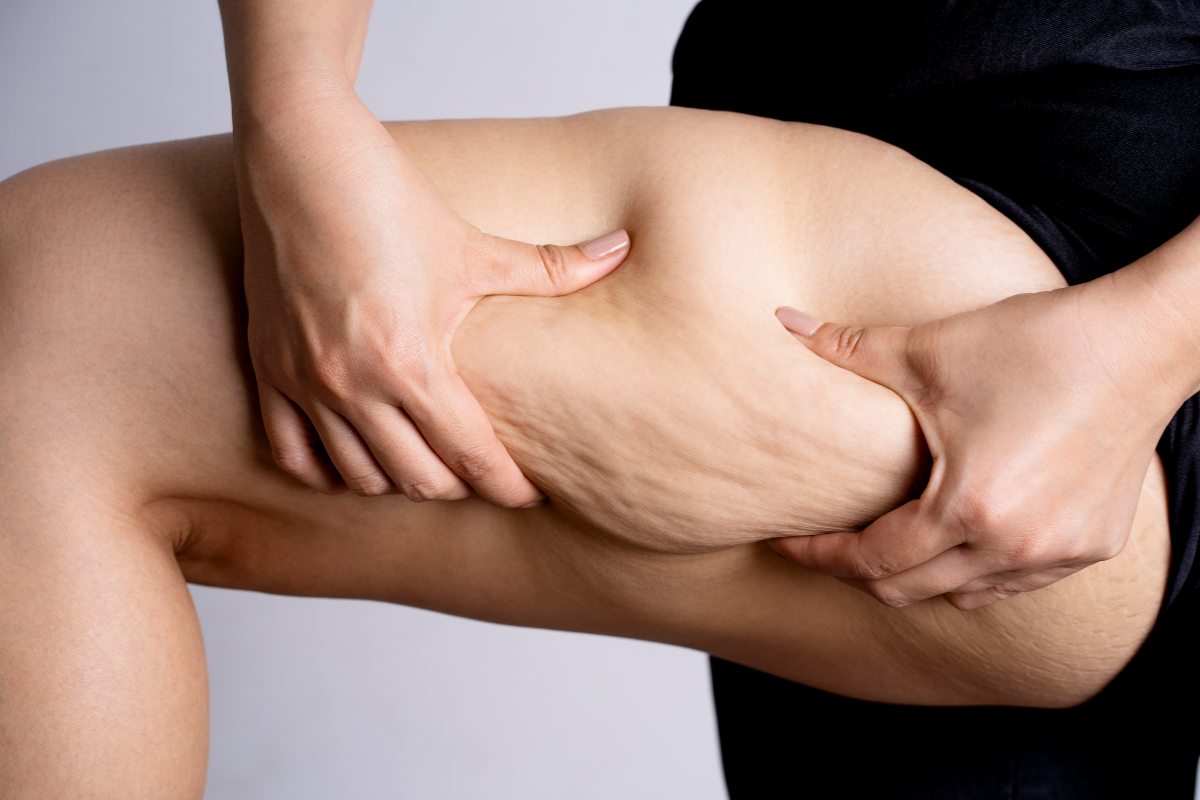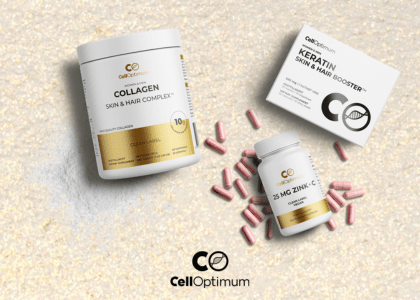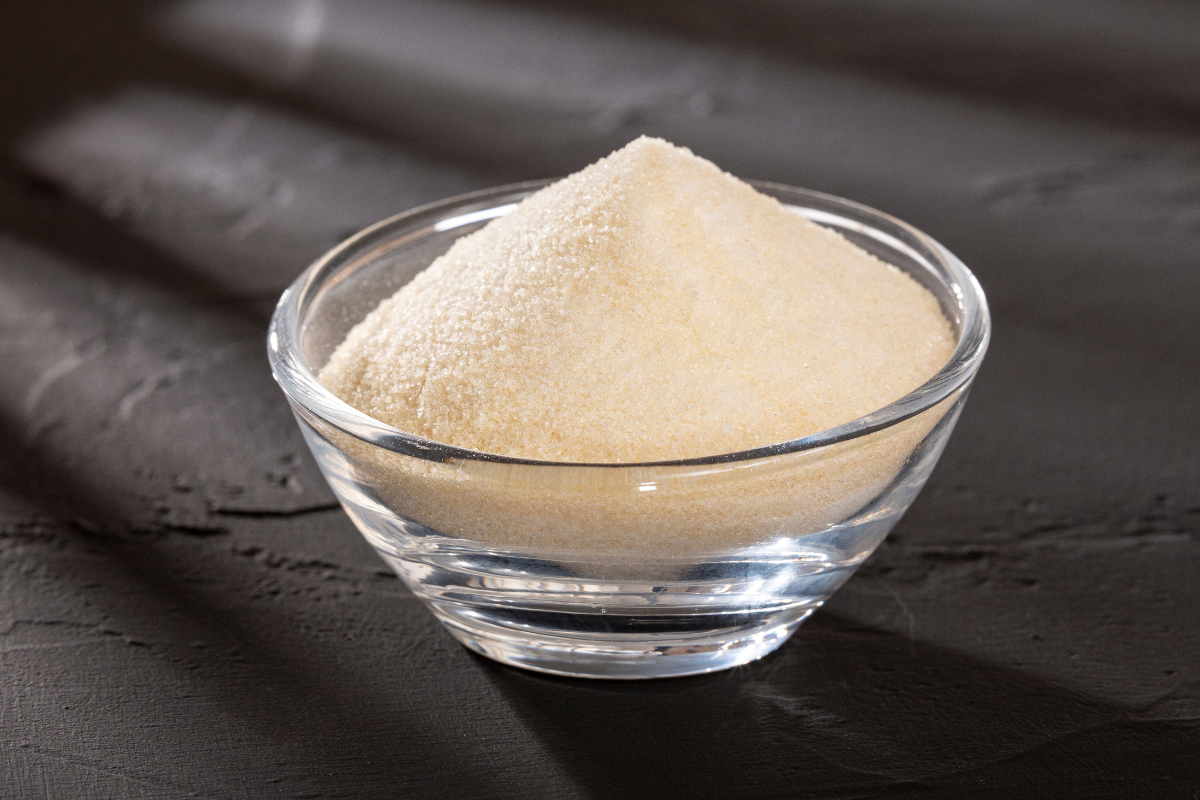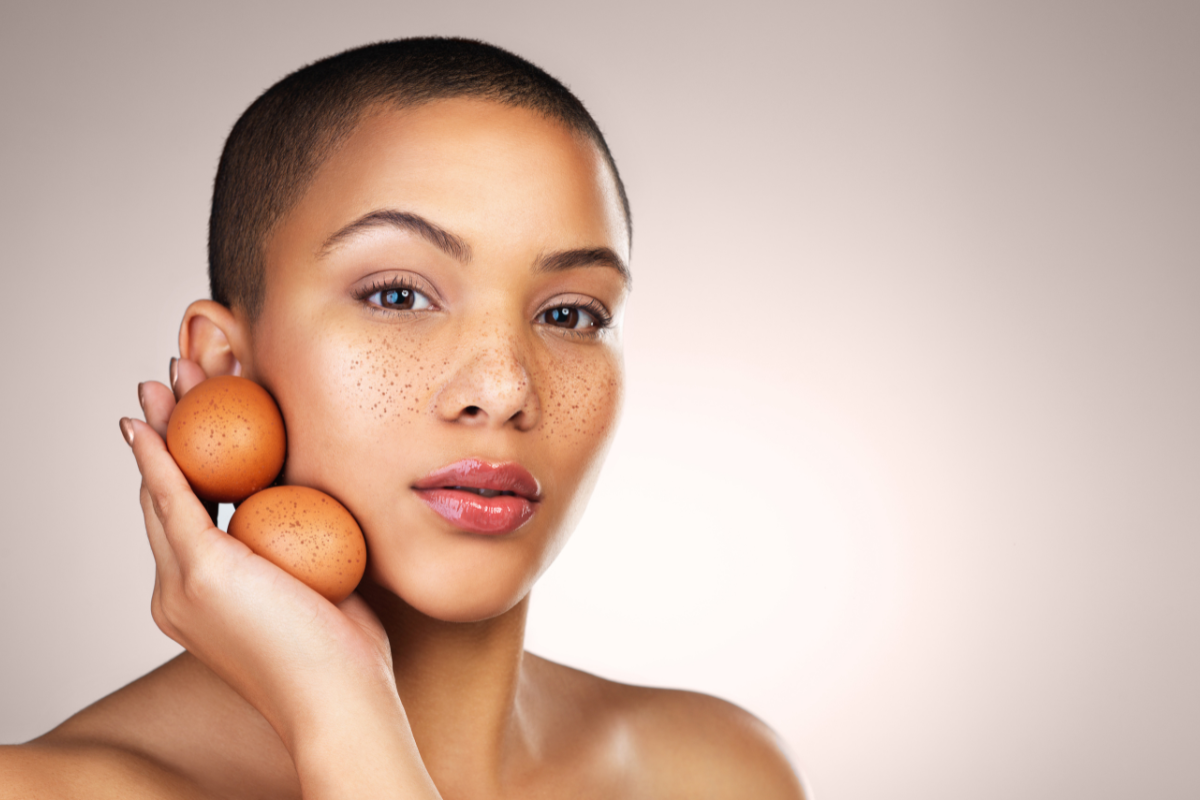Collagen & why you get cellulite

Collagen & why you get cellulite
90% of all women suffer from cellulite in some way, while it only affects about 10% of all men!
So if you are concerned about getting “orange peel” skin on your butt, thighs, or other places – keep reading, because below you will learn everything you need to know about why you get cellulite and what to do to get rid of it.
Why do you get cellulite?
To understand what causes cellulite, you first need to know about the fibrous protein collagen . You've probably heard of collagen in connection with celebrities getting their faces injected with collagen to slow down the signs of aging in the body.
Collagen is basically a fibrous protein that helps form connective tissue in your joints and skin, but also in many other places in your body. If your collagen is not formed properly or becomes damaged, the connective tissue can become too thin or “full of holes” and the fat under your skin can then “push out” through these holes, resulting in what we call dimpled skin, or as it is actually called, cellulite.
You can think of it this way: collagen is like a paper bag and the fat is like the food inside that paper bag. If the bag gets damaged, wet, or too stretched/thin, all the food can bulge out.
And when that happens, you get cellulite!
To maintain its internal integrity, collagen needs oxygen and nutrients from the blood. However, with increasing age and the concomitant decrease in estrogen levels, blood vessels in the lower body (especially in the calves, thighs and buttocks) can begin to lose function, reducing circulation, and in turn the delivery of oxygen and nutrients to collagen .
Besides age…
...so tights, tight underwear and tight clothing can also reduce blood circulation (which is important for collagen), and increase the risk of cellulite.
But if collagen decreases with age, why do young women get cellulite?
While it is true that a decrease in estrogen can cause a decrease in collagen in older women, the opposite appears to be the case in younger women. Among younger women, increased estrogen (also called estrogen dominance) can occur due to eating high amounts of processed foods and soy, among other things. Estrogen dominance or hormonal imbalances can also be caused by physical inactivity, stress, excessive calorie intake, birth control pills, pregnancy, and large fat deposits.
So cellulite in younger women is usually not because the paper bag is too weak, but rather because there are just too many food items in it.
Finally, it is also genetic, whether you are more likely to develop cellulite. Characteristics of specific genes have been shown to increase your susceptibility to getting cellulite. However, you can still control these factors to some extent with exercise, diet and lifestyle changes, and thus get rid of cellulite.
Why do women get more cellulite than men?
First, the subcutaneous (under the skin) fat in women is structured differently than in men, and is more uneven and irregular. Second, men and women both have alpha and beta receptors. Basically, beta receptors are responsible for helping break down fat, and alpha receptors are responsible for producing more fat. Compared to men, women have a much higher ratio of alpha receptors to beta receptors (about 10 times higher)!
Additionally, high estrogen levels can increase the tendency to build fat in younger women – plus women generally have more estrogen in their bodies than men. If you’re a woman reading this article, you might be depressed about what seems like an inevitable guarantee of getting cellulite. But many women don’t get cellulite, and those who do – can get rid of the cellulite they already have. So now we turn to the most important question: How do we get rid of cellulite or avoid getting cellulite in the first place?
What to do to get rid of cellulite?
From cellulite-reducing lotions to laser light machines, almost every method out there to eliminate or reduce cellulite is based on one of two principles:
1. Strengthening connective tissue
2. To reduce fat
Different layers of your skin have different types of cells, on the surface of the skin (epidermis). In the epidermis, cells are constantly being lost and replaced by new cells, while cells on the inner part of the skin are more permanent. These inner layers of skin are made up of elastic connective tissue, fibers, and blood vessels. If these supporting layers are weak, fat can “push out” through the skin, resulting in cellulite.
What can strengthen the connective tissue in your inner skin so that fat is less likely to “push out” through the skin?
Here are four tips to strengthen connective tissue to reduce the formation of cellulite:
- Physical activity. Physical activity improves blood flow to the connective tissue and strengthens the muscles that help tighten and support the skin.
- Creams. Aloe vera, hyaluronic acid, yeast extract, soy protein, vitamin C, vitamin E, and vitamin A can help hydrate skin and increase collagen and elastin production. So look for these ingredients the next time you buy a skin cream.
- Nutrition. By regularly eating protein-rich foods like fish, nuts, seeds, yogurt, beef, or dairy products, you can get collagen and elastin building substances, which strengthen connective tissue. Staying hydrated every day also helps your skin's elasticity and further helps your connective tissue stay healthy and supple.
- Circulation. Avoid tight clothing, especially around areas where you tend to develop cellulite. Laser treatment can also improve circulation, but may not be much better than just getting a regular massage to improve circulation. Radiofrequency, vibration, and ultrasound are other examples of expensive and over-hyped methods to improve circulation. Although doctors who make a lot of money from such treatments probably don't want to hear this, just as good results can be achieved through regular exercise and massage.
What other ways are there to get rid of cellulite?
Besides strengthening your connective tissue, the other way to get rid of cellulite is to reduce your overall body fat. These four “ fat-fighting tips” will probably sound familiar. That’s because they really work!
- Physical exercise. Physical exercise is a surefire way to get rid of cellulite. Just make sure you do something that works for you so you don't quit!
- Nutrition. A high intake of “empty calories” such as white refined sugar and an excessive calorie intake, and semi-finished or finished products that are processed and packed with preservatives and other additives, are also factors that increase the body's fat stores. Focus and base your daily diet on raw materials, such as vegetables, protein and lots of healthy fats.
- Liposuction. A popular method for reducing fat is to simply have liposuction. However, liposuction can cause unsightly dimples where the cellulite used to be.
- Injections. Injections of pharmacological drugs are designed to cause the destruction of fat cell membranes. Some countries do not even approve this method, as it has not been adequately evaluated. Therefore, think twice before taking the risk of injecting cell membrane-destroying compounds into your body.
- Collagen supplements
There are certainly other complex cellulite reduction methods, but most are simply combinations of the methods described in this article. Similar to other methods described in this article, fancy and expensive machines are simply designed to improve circulation – which you can achieve through an active, healthy lifestyle and getting massages!
- Tags: Hud/Skin Kollagen/Collagen






